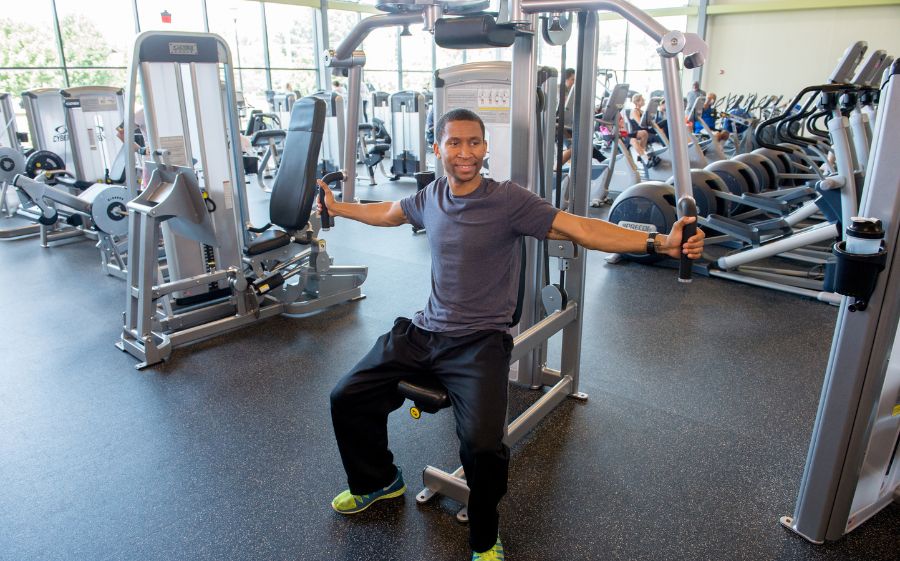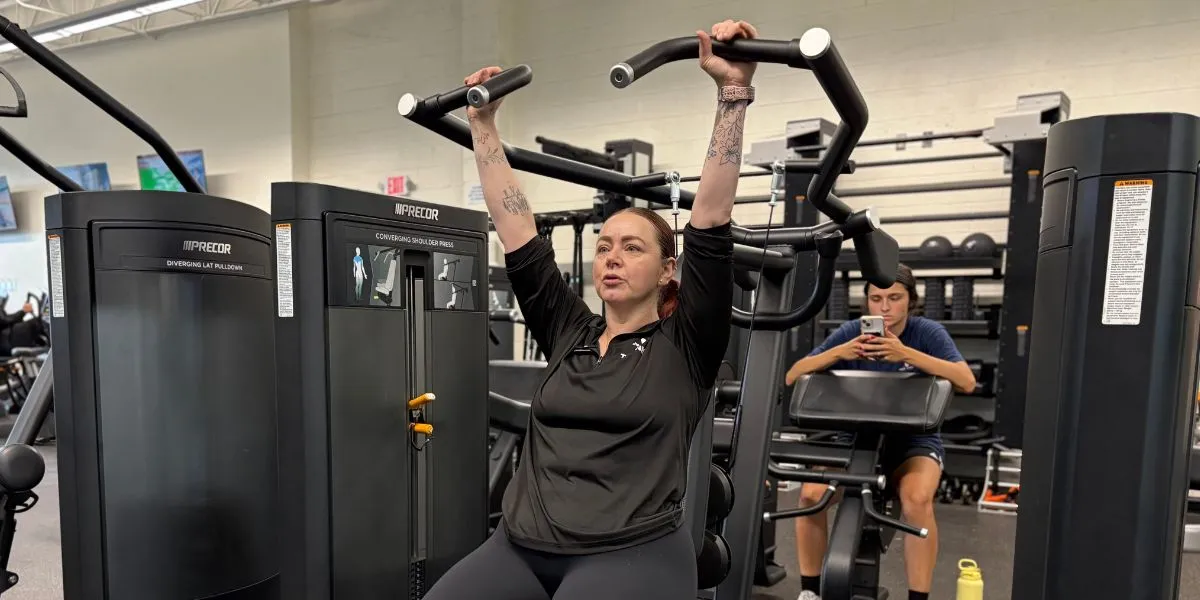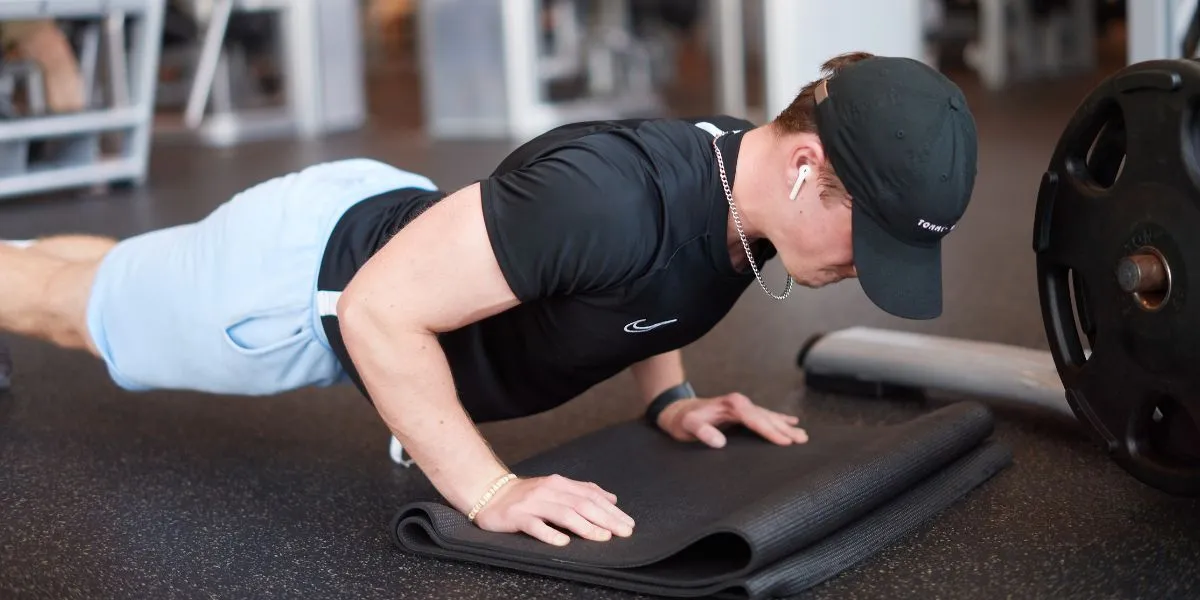
If one of your fitness goals is to improve your muscle strength, endurance, overall health and well-being, then reading about resistance training is a step in the right direction. Whether you’re a regular gym-goer looking to build more muscle or a newbie considering resistance training for weight loss, you’ll find this guide helpful for learning all about resistance training, including benefits, examples and tips.
What Is Resistance Training?
Resistance training involves conditioning your muscles by working against an external force or weight. These weights or forces can include resistance bands, weights and weight machines, and even your body weight in exercises like pull-ups, squats and push-ups. The idea is to get your muscles to contract regularly until they adapt over time, increasing resistance and strength.
Why Is Resistance Training Important?
Resistance training is an all-rounder that delivers both mental and physical health benefits. It’s an essential routine for improving overall health and fitness. Let’s explore some of the physical and mental health benefits of resistance training.
Physical Health Benefits of Resistance Training
Resistance training helps boost physical health and serves as a preventive measure for specific health-related conditions. It benefits your body in the following ways:
- Improved cardiovascular health: Resistance training is good for heart health. Studies have shown that it improves cardiovascular health in adults with or without cardiovascular diseases. It’s also effective for controlling several cardiovascular risk factors.
- Reduced risk of chronic diseases: Resistance training can reduce the risk of chronic diseases like diabetes and help prevent age-related diseases like sarcopenia, which causes a gradual loss of muscle mass and decline in muscle strength.
- Enhanced metabolic function: Resistance training increases your body’s lean muscle mass, which helps boost resting metabolic rate. Consequently, your body burns more calories at rest, making weight management or loss easier.
- Muscle growth: Studies show that resistance training increases muscle mass. The more your muscles adapt to resistance training, the more they grow in size.
Mental Health Benefits of Resistance Training
Beyond improving physical health, evidence suggests that resistance training can improve mental health outcomes in individuals with or without mental disorders. According to research, resistance training can lead to greater mental health by:
- Enhancing memory and focus.
- Helping prevent cognitive decline.
- Reducing symptoms of depression and anxiety.

Examples of Resistance Training Exercises
If you’re new to resistance training, you’ll likely want to learn about some exercises you can start on your next visit to the gym. Below, we highlight examples of upper and lower body resistance training exercises you can explore depending on your goals.
1. Upper Body Resistance Training
Your upper body comprises your arms, shoulders, chest, and back. Resistance training that targets these areas helps boost muscle strength and endurance, making everyday chores like carrying groceries easier. Over time, you’ll also notice your muscles getting toned and more defined.
While some of these exercises target specific muscle groups, a few target multiple muscle groups. Here are some resistance training exercises for different upper body muscle groups:
- Arm exercises: Biceps and triceps exercises fall under this category. Resistance training exercises like dumbbell, hammer and barbell curls target the biceps. You can explore exercises such as tricep dips, bench presses and push-ups for your triceps.
- Back exercises: Resistance training exercises like pull-ups, two-arm dumbbell rows and inverted rows help strengthen your core back muscles, improve posture and reduce back pain.
- Chest exercises: Exercises like push-ups and overhead presses are great for building resistance in your chest area.
- Shoulder exercises: You can use dumbbells and bands for resistance training exercises that target your shoulders. Band exercises, including reverse fly, front raise and band pull-aparts, help build and strengthen your shoulder muscles.
2. Lower Body Resistance Training
Lower body resistance training exercises target areas below the waist, such as calves, hamstrings and glutes. These exercises are vital for enhancing mobility and strength in the lower body and improving stability, posture, and balance.
If your goal is to build your lower body muscles, here are some exercises for different areas you can start with:
- Hamstring and glute exercises: Deadlifts, dumbbell lunges and hip thrusts effectively build your glutes and hamstrings.
- Calf exercises: Healthy calves help you move better, and resistance training exercises like calf raises and banded ankle pumps are suitable for building calf muscles.
Resistance Training for Beginners
Whether you're a beginner experiencing gym anxiety or simply want to learn more about the best resistance training practices, we've compiled some safe and practical tips to help you start your resistance training journey with confidence.
1. Use Body Weight
As a beginner starting resistance training, it may be tempting to start lifting the heavy weights you see your favorite fitness influencers use. However, you’re better off starting with your body weight. This means doing exercises where your own mass is the resistance, rather than dumbbells, barbells, or machines. In other words, your body is the weight.
This approach can help you learn the correct forms and movement patterns you’ll need when you begin using weights. Consider starting with resistance training exercises like push-ups, pull-ups and squats.

2. Explore Resistance Band Exercises
Aside from using your body weight, you can also explore using resistance bands, which are great for beginners. Some of the benefits of using resistance bands as a beginner are:
- Safety
- Versatility
- Accessibility and cost-effectiveness
- Ease of use
- Adjustability
As a beginner, you can start with resistance band exercises like band pull-aparts, banded rows, and banded squats.
3. Start With Light Free Weights
Beginners who want to incorporate free weights into their resistance training should start with light loads, simple movements, and proper instruction. Learning the correct form and technique is essential to ensure a safe workout and reduce the risk of injury. An experienced personal trainer can guide you through these exercises.
Resistance Training for Gym Veterans
If you’re a pro looking to take your resistance training to the next level, the following tips and techniques can help you increase your frequency and weight intensity.
1. Use Free Weights
By now, you've probably learned about proper forms and techniques for resistance training. At this stage, you can start adapting your free weight techniques to extensively target the resistance in your desired muscles. Consider changing weights and increasing the number of repetitions to suit your target intensity.
2. Incorporate Cable-Based Exercises Into Your Routine
Cables offer a versatile way to enhance your resistance training exercises to improve your results. As a pro, you can incorporate more cable-based exercises into your routine. Experiment with different pulley heights, attachments and body positions to boost muscle growth.
Build up Your Strength at The Greater Philadelphia YMCA
The benefits of resistance training are enormous, ranging from muscle strength and endurance to reduced risk of chronic diseases and improved cardiovascular health. Whether you’re a beginner learning the ropes or a pro exploring advanced techniques, The Greater Philadelphia YMCA offers conducive, family-friendly spaces and high-quality equipment for resistance training. Discover your local Y to get started.